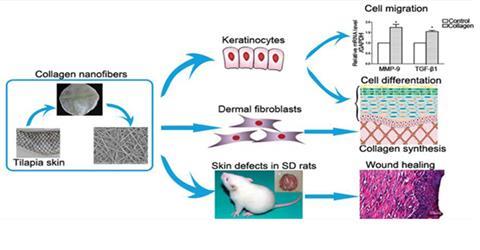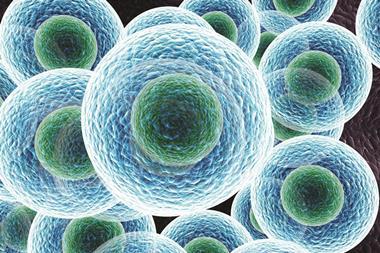Collagen fibres derived from the skin of tilapia fish supported faster wound healing in rats
It might not sound terribly appealing, but the best way to heal skin wounds could be to apply some fish skin protein. That, at least, is the claim of a group of researchers in China who were able to speed up skin wound healing on mice using collagen obtained from the skin of tilapia fish.
Collagen is the main structural protein in connective tissue, and its effectiveness in wound healing is well established. Until now attention has focused on mammalian sources, primarily pigs and cows, but these can transmit diseases through protein impurities. The risk is lower with fish collagen, because in general fish are affected by very different infectious agents to humans. Tilapia fish skin is also an abundant starting material.
To investigate further, a team led by Jiao Sun at Shanghai Jiaotong University School of Medicine, extracted collagen chemically from tilapia to create a sponge, which they spun into nanofibres. Tests showed that the nanofibres had the right physical characteristics for use in wound healing, including a high tensile strength, which suggested they would retain structural integrity as the skin moved around. They were also hydrophilic and thermally stable – the constituent fish collagen was found to have a high denaturation temperature of 45°C, meaning it will not lose its form at body temperature (38°C).

Further tests showed that the fish collagen did not produce an immune response in rats, so the researchers applied the nanofibres to skin wounds to see if they would improve healing. Wounds on rats treated with the nanofibres healed faster than those on untreated rats or rats treated with alginate dressings.
What makes this work of such value is the high availability of the starting material and the implications this could have for cost-effectiveness in chronic wound care, says Giuseppe Tronci, a biomaterials expert at the University of Leeds, UK. ‘Given the outstanding in vivo data, it would be interesting to see how the skin regeneration potential of this material compared with that of a commercially available collagen-based wound dressing, such as Promogran from Systagenix or Biostep from Smith & Nephew,’ he adds. ‘I would also be curious to see what kind of gelling properties these materials show in physiological conditions and to what extent the collagenous structure (triple helices, fibrils) is retained in the resulting mesh, since both aspects are crucial in terms of wound exudate management and skin wound healing.’
Wound treatment products based on fish collagen are a commercial possibility, says team member Xiumei Mo. But tests on larger animals are needed, and this is something the group is now working on, along with modifying the fish-derived nanofibres to give them antimicrobial properties.
References
T Zhou et al, ACS Appl. Mater. Interfaces, 2015, DOI: 10.1021/am507990m












No comments yet